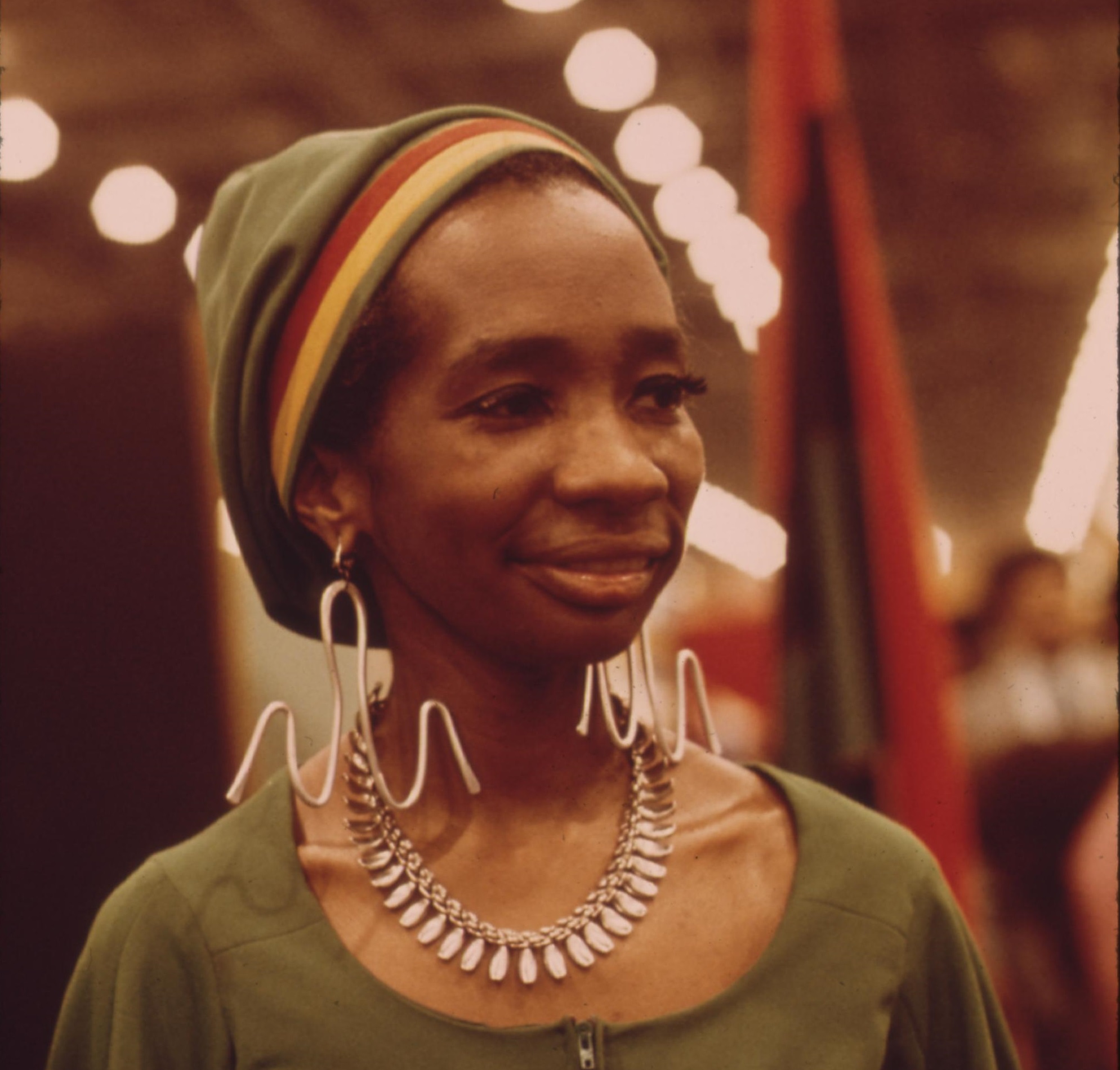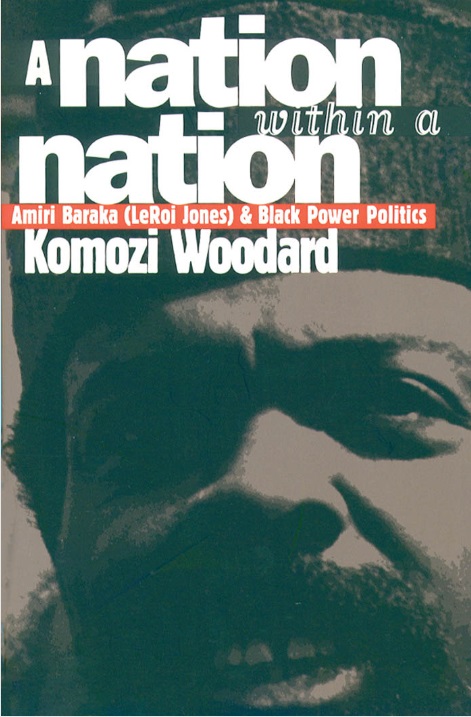The Women of the Committee for Unified Newark (CFUN)
*This post is part of our online roundtable celebrating the 20-year anniversary of the publication of Komozi Woodard’s A Nation Within a Nation

Like many others, Komozi Woodard’s A Nation Within a Nation opened my eyes to Amiri Baraka, the Committee for Unified Newark (CFUN), and local level Black Power activism. When I first read the book as a graduate student interested in learning more about Black Power I was familiar with the playwright’s pioneering role in the Black Arts Movement and Newark as an epicenter of Black activism. However, for the first time, Woodard offered me and other readers a nuanced and balanced examination of Baraka’s rise to fame, the interrelationship of the Black Arts and the Black Power movements, and the daily work of practicing cultural nationalism.
A key component of this history was the question of women and gender roles within the group. Because CFUN initially adopted a position that “shortsightedly imagined submission for women,” many of these activists did not appear in histories about the group or about cultural nationalism more broadly (124). Yet, Woodard did not diminish CFUN’s initital marginalization of women or undersell women’s roles in the organization. Throughout A Nation Within a Nation, Woodard asserted that CFUN women were the “most original and enthusiastic activists within” the group and foregrounded their role in shaping the Newark-based organization (123). His book was an indispensable study not only because it provided an unprecedented look at Black Power organizing, but also because it introduced a new generation of readers to the vital work of women in cultural nationalist organizations.
With this book, Woodard modeled how to do Black Power history before the present-day proliferation of this historiography. He located the origins of Black Power and Baraka’s activism within post-war Black leftist organizing. Previously, scholars framed Black Power as a 1960s phenomenon or as a movement that arose primarily in response to the Civil Rights Movement’s failures. By beginning the history of one of Black Power’s most influential organizations in the post-war era, Woodard situated cultural nationalism in the longer tradition of black radicalism and showed how previous generations fostered what we know as Black Power today. He then chronicled the rise of CFUN with careful attention to how the Black Arts Movement luminaries such as Malcolm X and Newark’s local culture shaped the organization. His detailed account of “the politics of cultural nationalism” showcased the inner workings of CFUN, including members’ practice of Kawaida—the organization’s cultural nationalist philosophy—and their success in enacting Black Power through their playhouses, community stores, restaurants, and schools. Woodard treated activists’ efforts at community- and nation-building outside of Newark with the same seriousness, detailing the formation of the Congress of African People (CAP), an organization that attempted to actualize CFUN’s tenets on a national and international scale. The result is a book that intertwines the local, national, and international to tell a story of one of the most successful Black Power organizations in the country.
In A Nation Within a Nation, the Malaika, or CFUN’s Women’s Division is the “largest section” of the organization, and is central to Woodard’s story. He explains that activists and theorists such as Amina Baraka and Jaribu Hill “came to the fore” within the collective in 1969 and transformed CFUN into a modern, highly-functioning cultural nationalist group. They created the African Free School, a preschool and elementary education center that fostered Black children’s intellect through Kawaidist principles. Woodard also details how women such as Muminina Furaha helped establish the Spirit House Movers and Players, “a repertory group that travelled across the nation performing the new plays and poetry of the Black Arts Movement” (70). Not content to frame these women as simply activists, he also introduces readers to the Malaika’s study circles such as the “United Sisters” and other forms of intellectual and artistic production including handbooks and women’s columns. This analysis made A Nation Within a Nation the first text to explicitly identify key women leaders, activists, and theorists within CFUN and the larger Black Power movement by name, and to detail their pervasive influence on the organization. For many, the book illuminated the role Black women played in a collective known for having a “conservative or reactionary” position on women’s roles (123).
Woodard also offered many readers their first look at the Black Women’s United Front (BWUF). Born out of women’s “protracted struggles” for gender equality, and the organization’s embrace of Marxist ideology, this women’s collective “demanded full equality within the black political arena” (180-181). As a subsidiary of CAP, the BWUF, raised the “consciousness of men and women about the triple oppression of black women” and organized members to rally around contemporaneous manifestations of this oppression. An example of this was the defense of Joan Little, a poor Black woman on trial for killing the jail warden who attempted to rape her. Through his discussion of the BWUF, Woodard foregrounds the “sobering battles” women in the organization waged against gender oppression and their “important impact on modern black nationalism” (183).
It is because Woodard offers such a substantive account of CFUN’s inner workings that a new branch of the Black Power historiography dedicated to cultural nationalism has developed. Since the publication of A Nation Within a Nation, there have been a bevy of studies focused on cultural nationalism, Kawaida, CFUN, and CAP. Scot Brown has published a thorough account of Baraka’s one-time mentor, Maulana Karenga, and his US Organization. Following in Woodard’s footsteps, another CFUN member, Michael Simanga has authored an important text examining the ideological evolution of CFUN and CAP, Amiri Baraka and the Congress of African People: History and Memory. Woodard also laid the groundwork for newer histories that focus specifically on female cultural nationalists. My own book, Remaking Black Power: How Black Women Transformed an Era, would not have been possible without Woodard’s introduction of these women. There is also exciting new work in the pipeline on Black women cultural nationalists and the life, theory, and activism of figures such as Amina Baraka by scholars including Kenja McCray and Kim McMillion.
The Committee for Unified Newark was one of the most dynamic organizations and “political experiments” of the Black Power era. Woodard creates a comprehensive history of the group, including its structure, ideology, successes, and failures. His expansive history solidifies CFUN’s place in Black Power history and historiography. It also allows many of us to see how Black women can transform an organization irrespective of gender politics. His devotion and approach to this history, in many ways, inaugurated the field of “Black Power Studies” and established its contours. Twenty years later, Woodard’s book remains an authority on Black Power because he does not shy away from cultural nationalist gender politics, teaching future historians that this history cannot be told without the women who made CFUN.
Copyright © AAIHS. May not be reprinted without permission.
